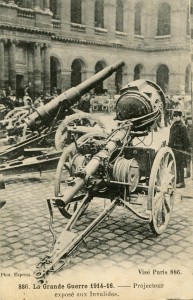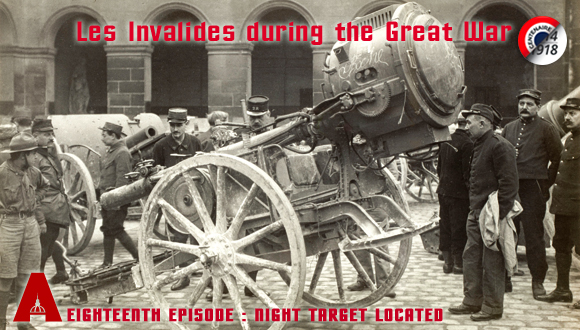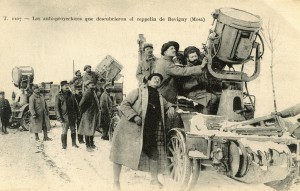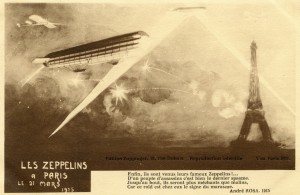 This trophy displayed in the main courtyard in October 1915 is less well-known than the cannon, the machine guns or the aircraft. This is a German searchlight used to light up the sky during the night to locate enemy flying machines. The word «Boche» is visible on the projector drum: this is the most frequent of the unfavourable french nicknames used for the Germans.
This trophy displayed in the main courtyard in October 1915 is less well-known than the cannon, the machine guns or the aircraft. This is a German searchlight used to light up the sky during the night to locate enemy flying machines. The word «Boche» is visible on the projector drum: this is the most frequent of the unfavourable french nicknames used for the Germans.
The projector captures the attention of several soldiers, as well as that of a young boy on the left of the picture. The latter is wearing a scout’s uniform. In fact, during the war, a large number of groups undergoing military preparation visited the Musée de l’Armée.
Night attacks
In 1915, the magazine La Science et la vie, Issue n°19, published an article on the projectors of which the following is a revealing extract:
«The development of techniques is a motivation for finding solutions to protect ourselves against night attacks. The approaches to a trench must be lit to prevent enemy pioneers from cutting the wires with wire cutters or from throwing grenades. At sea, torpedo boats must be detected. The old techniques: grenades, flaming torches, fires, rockets or flares are no longer enough. Electric light and projectors are therefore used. The principle is to use a very intense electric unit which projects a cone of white light onto a concave mirror of silvered glass […] To increase their range even more; we use bulbs with a substantial light intensity ranging from 3,000 candles for small projectors up to 50,000 candles for the large ones».




Ajouter un commentaire